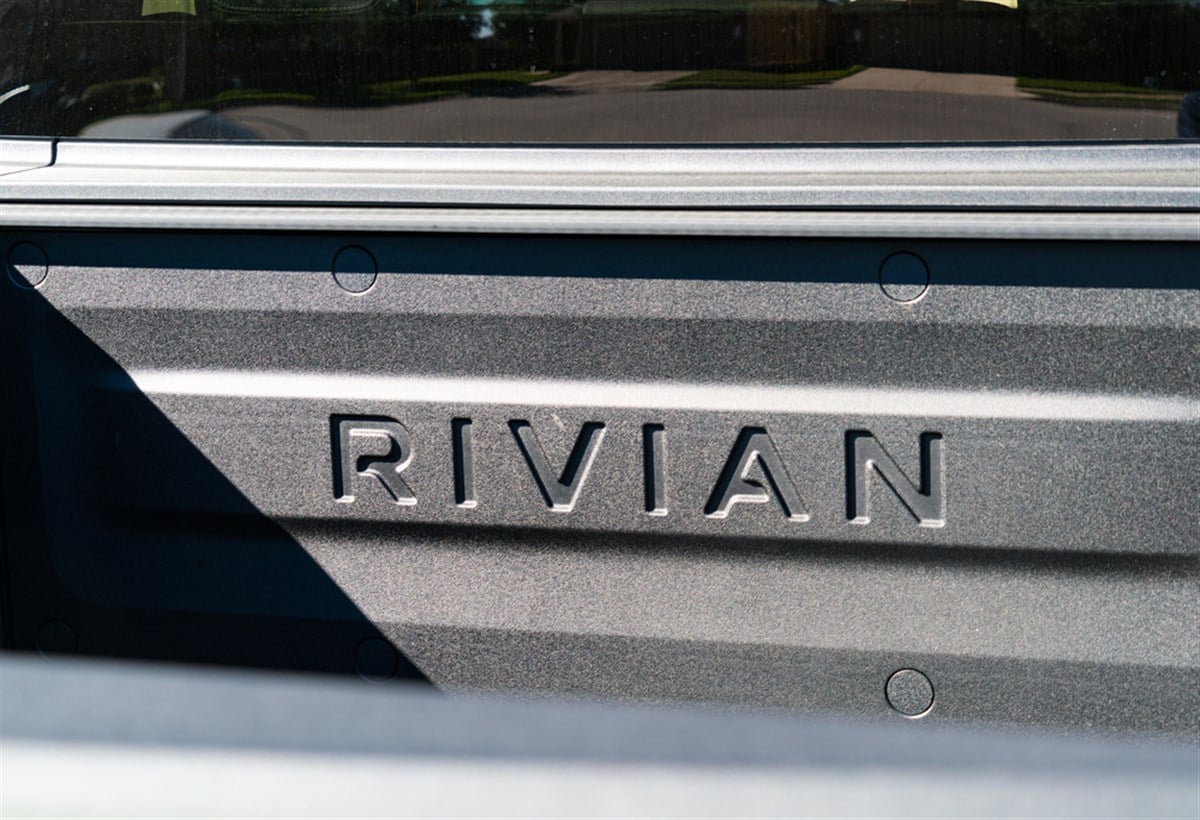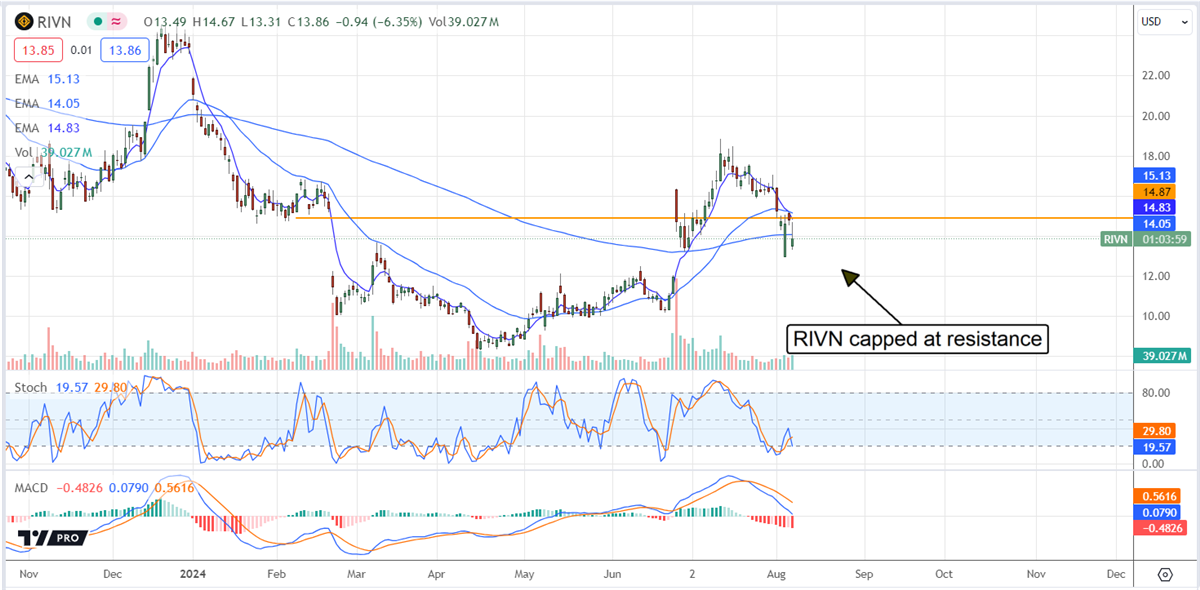
Rivian (NASDAQ: RIVN) made progress on several fronts in Q2 and reached a pivotal quarter, at least in the eyes of its CEO. However, despite the good news, the stock price will return to $10 and may move even lower. The reason is simple. Rivian isn’t making money but burning it. Costs are up YoY despite cost-control efforts, and it’ll be a long time until true profitability is reached.
In this environment, the EV auto stock will unlikely regain traction, which is an attractive quality for short-sellers. Short interest is running above 10% for this low-float stock. Add in the dilutive impact of its deal with Volkswagen and the likelihood it will need to raise cash again at least once, and the odds are high this stock will set a new low long before it ever trades with a $20 handle again.
Rivian Slips on Mixed Results: Volkswagen Deal Isn’t Enough
Rivian struggled in Q2 despite the positive spin put on the results. The $1.12 billion in net revenue is flat compared to last year, down sequentially, and short of the consensus estimates by a fair margin, about 260 basis points. Revenue is driven by the delivery of 13,790 vehicles, down compared to last year, and production figures are weaker. The company produced only 9612 vehicles, raising whether it could meet guidance.
The margin news is mixed, with the GAAP results $0.14 better than expected, but that is the only good news. The $1.27 in losses per share is worse than last year and compounded by a higher share count. The salient details are that gross losses grew, operating expenses grew, and net losses grew. Adjusted results are flat compared to last year but still poor, showing mounting losses. The company reaffirmed its guidance for the year but, as indicated, it’s questionable it can follow through on the outlook.
The negative balance sheet highlights are compounded by the deal with Volkswagen, which injected $1 billion in cash in exchange for convertible debt. The cash balance is down, and liabilities are up, resulting in decreased shareholder equity. The truly bad news is that the share count is up compared to last year and is likely to continue rising. The $7.68 billion in cash and almost $10 billion in total liquidity is only enough for three to four quarters at the current use rate.
Analysts Will Cap Gains in Rivian This Year
The analysts continue to rate Rivian as a Moderate Buy with a consensus target about 35% above the price action, but their activity will cap gains this year. The bulk of revisions issued following the release include reduced price targets leading to the low end of the expected range. The low end is $13 and may provide a floor for the action, but there is a risk of a new low target being set because the revision trend is downward. Wedbush’s Dan Ives is among the most optimistic on Wall Street, looking ahead to the production and delivery of next-gen vehicles, reiterating his target of $20.
The technical action in RIVN stock is not promising. The market shows some signs of support at the $13 level, but they are offset by indications of resistance that are capping gains. The resistance is consistent with the top of a price gap and a cluster of moving averages that are rolling over into a bearish signal. That signal is compounded by bearish momentum and bearish crossover in stochastic that could lead to new lows. The critical support target is near $13, if it is broken the next target is near $12 and unlikely to hold unless some truly good news is released.






